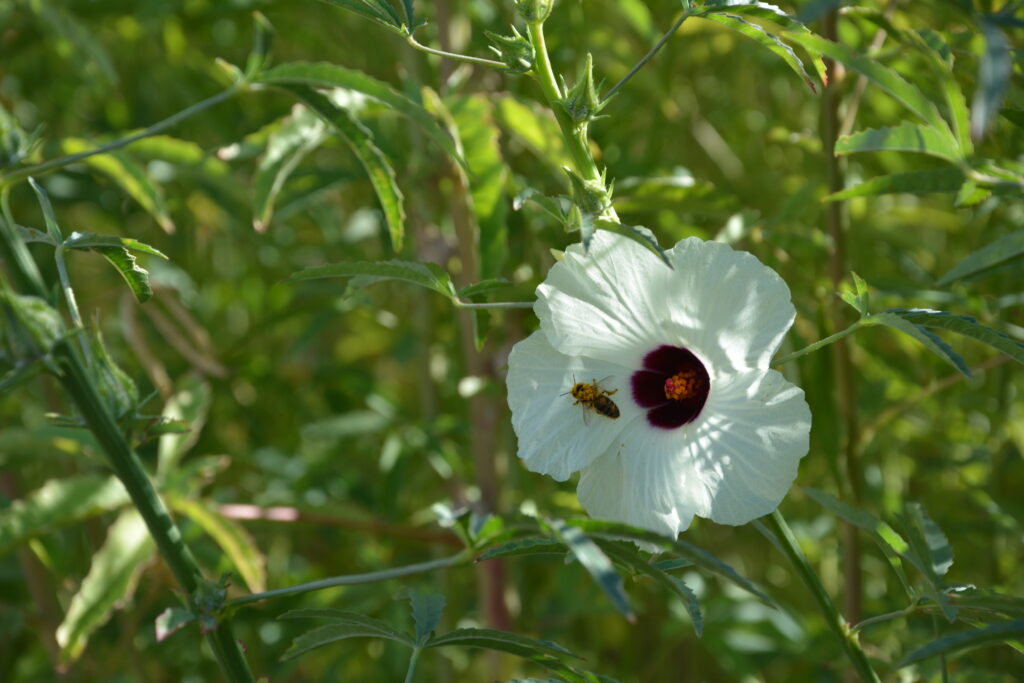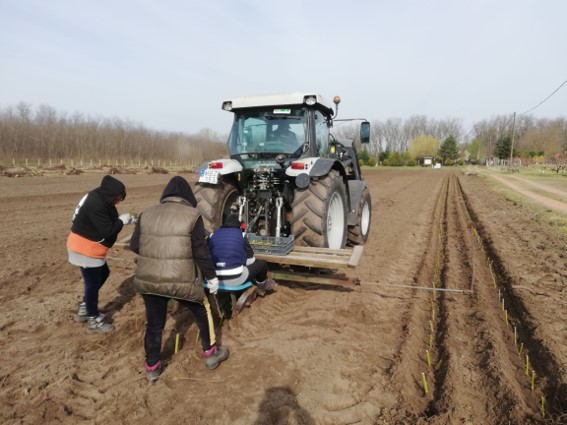MarginUp! identifies biophysical and social constraints for marginal lands in 7 regions
There are many biophysical and social factors that make lands marginal and MarginUp! is working on tackling them for its use cases, to secure use and return profitability on marginal lands, while enhancing biodiversity.
Marginal lands used as feedstock for biobased industries are typically biophysically poor, fallow, abandoned, degraded, or in crop production but suffering from soil degradation, erosion, or nutrient run-off. Some of the main obstacles found to cultivating industrial crops on marginal lands are the lack of a clear definition and understanding of what constitutes marginal land, and that suitable land for industrial crops is limited by the scale of assessment, for which higher resolution data is needed. Another obstacle is identifying if the proposed marginal land is being used for other purposes, such as grazing or fuel wood collection.
MarginUp! will work on a definition of marginal lands by clear criteria and a methodology that can be used for a sustainable bioenergy production, and on providing sufficient and reliable data to develop models and calculate biomass yields.
However, there is no clear consensus on defining and identifying marginal lands using socio-economic constraints indicators, but several approaches and definitions. Often there is a strong relationship between several of the socioeconomic factors, e.g., low population density usually goes together with low accessibility, low income and an ageing population, which implies that a rural multidimensional typology would be the best approach to classifying marginal lands further according to socio-economic constraints.
Socio-economic factors need to be considered together with other factors that make a particular situation a marginal one, such as biophysical characteristics, environmental factors, ecosystem services, geographical location, agricultural structures and political factors. Quantifying the individual and combined impacts of all challenges is important for policy making on marginal lands. This could eventually lead to the development of an analytical framework for the identification and assessment of marginal lands.
Biophysical factors on MarginUp! use cases
Spain
The Spanish use case presents a combination of low precipitation and high temperature, as well as adverse physical characteristics such as low pH and organic matter. The agricultural land first selected for MarginUp! activities development is the land with lower than optimum corn yield in the Alagón Valley.
The project is introducing industrial crops such as hemp and kenaf, in rotation with traditional crops such as tomato, corn and peppers, as it will help to increase organic matter in the soil and improve the yields of the food and feed crops like corn. It will also help to obtain benefits for the area in terms of bioindustry, diversity production, and higher incomes for the farmers.

Sweden
The main marginality factor on MarginUp! Swedish use case is low temperature during the cultivation season, due to long, dark and cold winters. Recurring rainfall and high humidity conditions can start as of September. Hence, the choices of crops that can be cultivated are limited to feed such as grass, green fodder and grain for animal production of milk and meat.
Partners have chosen turnip rape as it has a ripening time of around 110-120 days, it is an industrial crop that can grow in colder climate and can be used to produce biodiesel. Specifically, the chosen sort Cordelia is a rich yielding with high oil content. It will give a positive effect on the soil quality, as well as more alternatives in the crop rotation for farmers, and a financial return comparable to crops like oat and barley.
Greece
In this case, the main marginality constraint are contaminants, as the case is located in a depleted surface lignite mine that can contaminate the surrounding land, water, and air. Some of the main contaminants that may be found (heavy metals, organic compounds, acid mine drainage (AMD), radionuclides, chloride, sodium and sulphate salts, and dust and particulate matter) can reduce soil fertility and crop yields, produce soil structure damage and erosion, present environmental damage, as well as negative impacts on soil microorganisms and plants and animals.
MarginUp! will introduce Pseudoacacia as it’s a fast-growing tree commonly used for reforestation, agroforestry, and soil improvement. It can grow in poor soils and harsh environments, it is a nitrogen-fixing species, used for its wood (highly valued for its strength and durability), and its ability to tolerate drought and other environmental stressors. It can also provide shade and shelter for other plants, in this case aromatic plants. These will improve soil quality, promote biodiversity and climate adaptation, and bring economic benefits.
Socio-economic factors on MaeginUp! use cases
Germany
The German use case presents high ground water level and in winter it is partially flooded. It has plenty of ditches, with peat of different thickness and permanent high GHG emissions. The main marginality constraints that it presents are that natural grassland cannot be used as arable land and it provides low income for animal grazing as well. There are few developed land use alternatives and value chains, as they conflict with nature conservation, and this often leads to land abandonment. Furthermore, the area is too large for artificial conservation management, and political attempts to reduce GHG emissions through rewetting have failed, as there are large areas with slow drain, which impacts collateral areas.
MarginUp! will demonstrate how new wet agriculture value chains (e.g., reed, cat tail and reed canary grass) and land use options may help overcome these limitations and contribute to regional development. Cost-effective production of industrial crops can reconcile economic with social interests, such as rewetting fenlands and reducing its GHG emissions, as well as securing biodiversity and nature conservation (e.g., bird conservation – Otis tarda, Grus grus).

Hungary
The main marginality factors in the Hungarian use case are the lack of human resources, that has a high impact on horticulture, the competition between the agricultural and the industrial sector, and the prices of energy and fertilisers.
To tackle these challenges, MarginUp! will optimise the farm structure and stablish a short crop rotation of trees and herbs. A development in machinery and modern technology will motivate younger farmers to get involved and plantations will also require less manual labour.

International use cases
South Africa
In this case, there is no biophysical constraint per se, as the point is not to cultivate the land, but only to collect the resource with land clearing operations. Nevertheless, there are several socio-economic barriers such as access to sites and its added costs, lack of law enforcement, conflicts over resource use, lack of an enabling policy environment for bioenergy, lack of recognition of ecosystem services, and no guarantee of long-term supplies.
MarginUp! solution will provide and process biomass, enhance ecosystem services, and include productivity for farming to address all these factors.
Argentina
The main marginality factors here are water excess and waterlogging and salt-affected soils, as well as an area sparsely populated and with very low productivity, based on the proximity to the centre of consumption. There is also a marked man influence.
To face these challenges, MarginUp! will focus on the Mediterranean legume Lotus tenuis, that invaded the grasslands. This species presents high nutritional value, which increased the forage quality and can improve meat and milk production at a lower cost. It can serve to producing honey, given that seed fertilisation is predominantly caused by pollinating insects. In some cases, it has been shown that cattle that incorporate Lotus tenius in their diet have lower methane emissions. Furthermore, this species could also contribute to carbon sequestration in soils.

